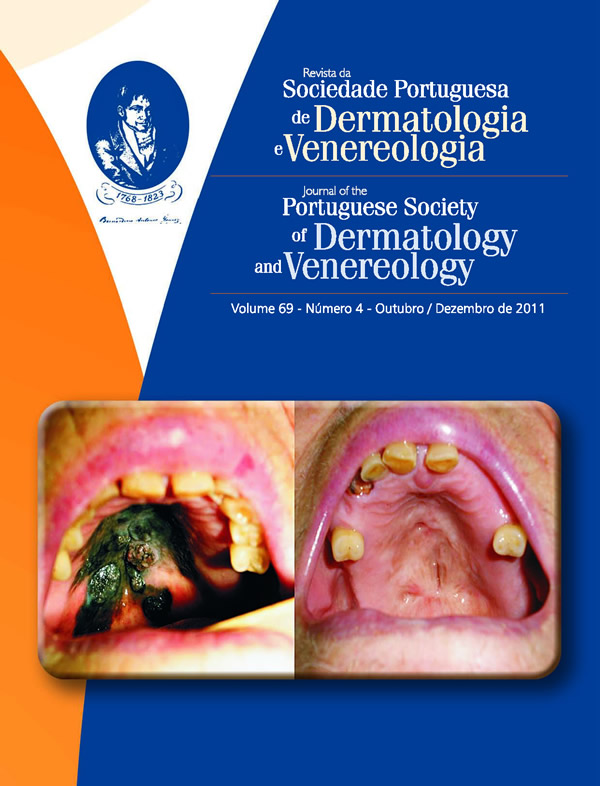DERMATOSCOPIC STRUCTURES IN EIGHTY PIGMENTED BASAL CELL CARCINOMAS
Abstract
Introduction: Nowadays, the diagnosis of basal cell carcinoma (BCC) is one of the most frequent applica- tions of dermatoscopy in the daily practice. About 7 to 10% of BCC have pigmentation. Considering the several growth patterns of BCC and their asymmetrical distribution of pigment, the inclusion of pigmented BCC within the differential diagnoses of malignant melanoma is required.
Methods: Eighty histologically confirmed pigmented BCC were recruited from 2008 to 2010 and analysed by digital dermatoscopy (FotofinderTM). To establish the dermatoscopic diagnosis of BCC was used a method described more than 10 years ago, based on the absence of pigment network (negative criteria) and the presence of at least one positive criteria (ovoid nests, blue-grayish globules, leaf-like areas, spoke-wheel areas, ulceration and arborizing vessels).
Results and Conclusions: The frequency of positive parameters and the presence of other dermatoscopic structures (milia, pigment network, erythema, hypopigmentation and several types of vessels) were evaluated and compared with other validated studies.
KEYWORDS – Carcinoma, Basal Cell; Dermoscopy; Skin Neoplasms; Telangiectasias.
Downloads
All articles in this journal are Open Access under the Creative Commons Attribution-NonCommercial 4.0 International License (CC BY-NC 4.0).








